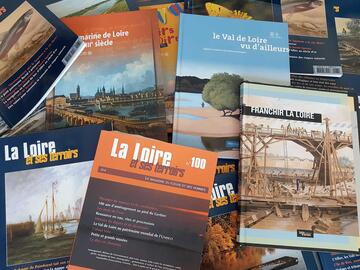The Val de Loire has been included on the list of UNESCO World Heritage sites since 30 September 2000 with the status of living cultural landscape. The site is the largest listed site in France, stretching 175 miles along the river from Sully-sur-Loire (Loiret) to Chalonnes-sur-Loire (Maine-et-Loire) and covering more than 300 square miles and 1.2 million inhabitants.
The World Heritage committee decided at the 22
nd session in 1998 to invite participating states
(States Parties) to present periodic reports relating to the state
of conservation of World Heritage properties situated in their
territory. These reports, presented every 6 years, are examined on
a regional basis. For the years 2005-6 they are focused on
Europe and North America and will be studied by the World Heritage
committee in its 2006 session.
The presentation of the reports gives the listed sites an
opportunity to propose changes to the area they cover.
The Val de Loire Territorial Conference which met on Feb 25
2005, expressed a wish for an expert enquiry to explore any
possible changes to the area which includes the Val de Loire -
World Heritage site. This enquiry took place between June 20
– June 22, 2005
In the coming weeks a report will go to the Ministers
concerned (Culture and Communication; Ecology and Sustainable
Development) who are to decide on which proposals will be presented
to the World Heritage Centre.
With this in view and at the proposal of the Prefect of the
Centre region (who is the coordinator of the Plan Loire Grandeur
Nature - an environmental management plan for the river) the
Territorial Conference of July 5 2005 is proposing to include in
the report the following requests:
- In
Centre region :
-
- The site of the aqueduct of Briare, as well as the
associated site, Mantelots, both of which are particularly
representative of the history of the navigation of the river
Loire. This could be linked to the World Heritage site
by the river or by a buffer zone, the actual method is yet to
be decided.
- The site of the château of Chenonceau, a jewel of
Renaissance architecture which is intimately involved
in European history, to be linked to the existing listed site
by the course of the river Cher and its workings (needle
dams, lock keepers’ houses)
- In the
Pays de la Loire region :
-
- The site of the château of Angers, cradle of the
Plantagenets who ordered the building of defence dikes to
protect those who lived along the banks of the river Loire
from its flood waters. This site would be linked by the
minor course of the river Maine
